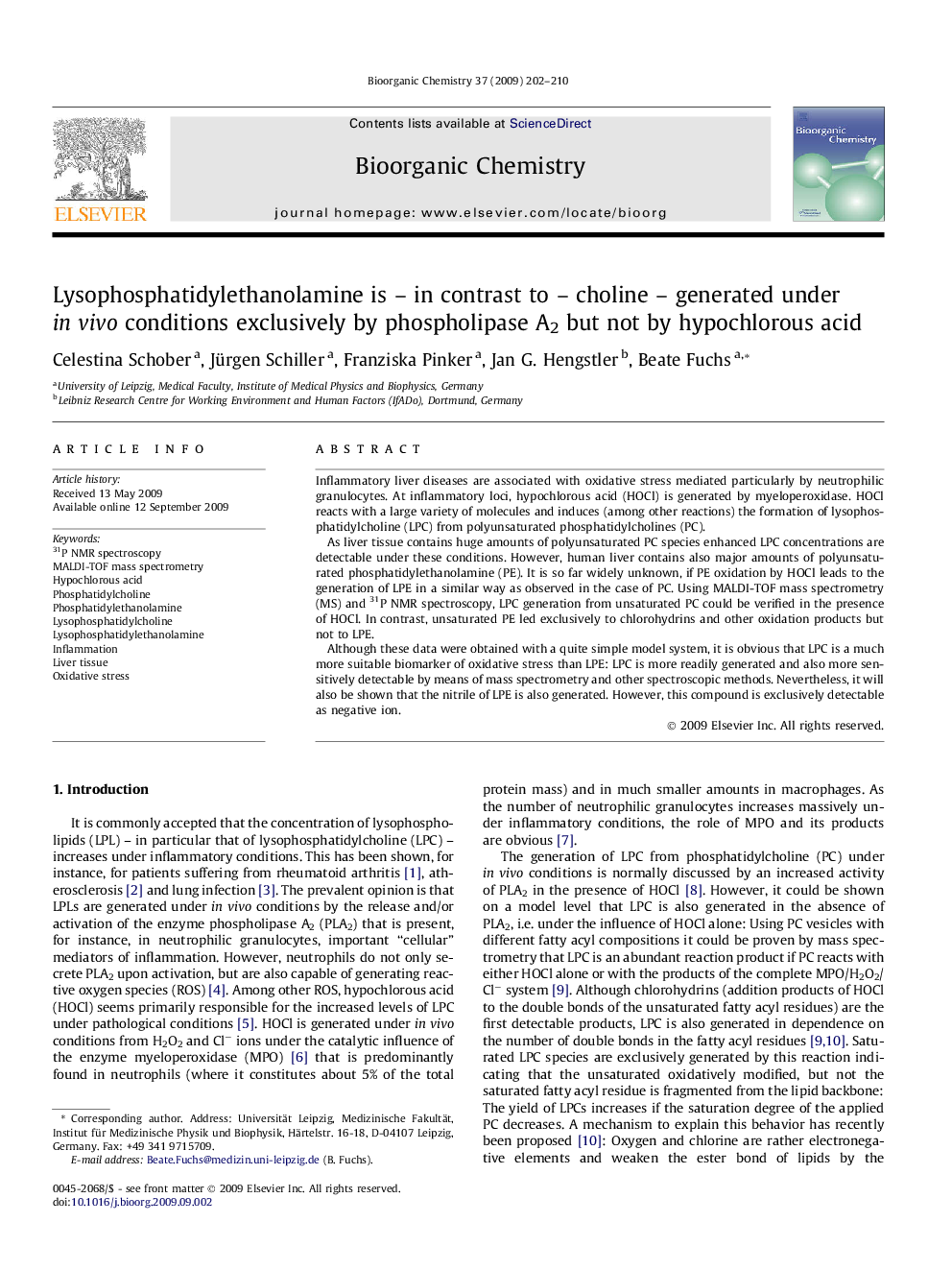| کد مقاله | کد نشریه | سال انتشار | مقاله انگلیسی | نسخه تمام متن |
|---|---|---|---|---|
| 1356017 | 981082 | 2009 | 9 صفحه PDF | دانلود رایگان |

Inflammatory liver diseases are associated with oxidative stress mediated particularly by neutrophilic granulocytes. At inflammatory loci, hypochlorous acid (HOCl) is generated by myeloperoxidase. HOCl reacts with a large variety of molecules and induces (among other reactions) the formation of lysophosphatidylcholine (LPC) from polyunsaturated phosphatidylcholines (PC).As liver tissue contains huge amounts of polyunsaturated PC species enhanced LPC concentrations are detectable under these conditions. However, human liver contains also major amounts of polyunsaturated phosphatidylethanolamine (PE). It is so far widely unknown, if PE oxidation by HOCl leads to the generation of LPE in a similar way as observed in the case of PC. Using MALDI-TOF mass spectrometry (MS) and 31P NMR spectroscopy, LPC generation from unsaturated PC could be verified in the presence of HOCl. In contrast, unsaturated PE led exclusively to chlorohydrins and other oxidation products but not to LPE.Although these data were obtained with a quite simple model system, it is obvious that LPC is a much more suitable biomarker of oxidative stress than LPE: LPC is more readily generated and also more sensitively detectable by means of mass spectrometry and other spectroscopic methods. Nevertheless, it will also be shown that the nitrile of LPE is also generated. However, this compound is exclusively detectable as negative ion.
Figure optionsDownload as PowerPoint slide
Journal: Bioorganic Chemistry - Volume 37, Issue 6, December 2009, Pages 202–210